11 Truly Non-Toxic Cookware Brands for a Healthy Kitchen, Tested & Reviewed
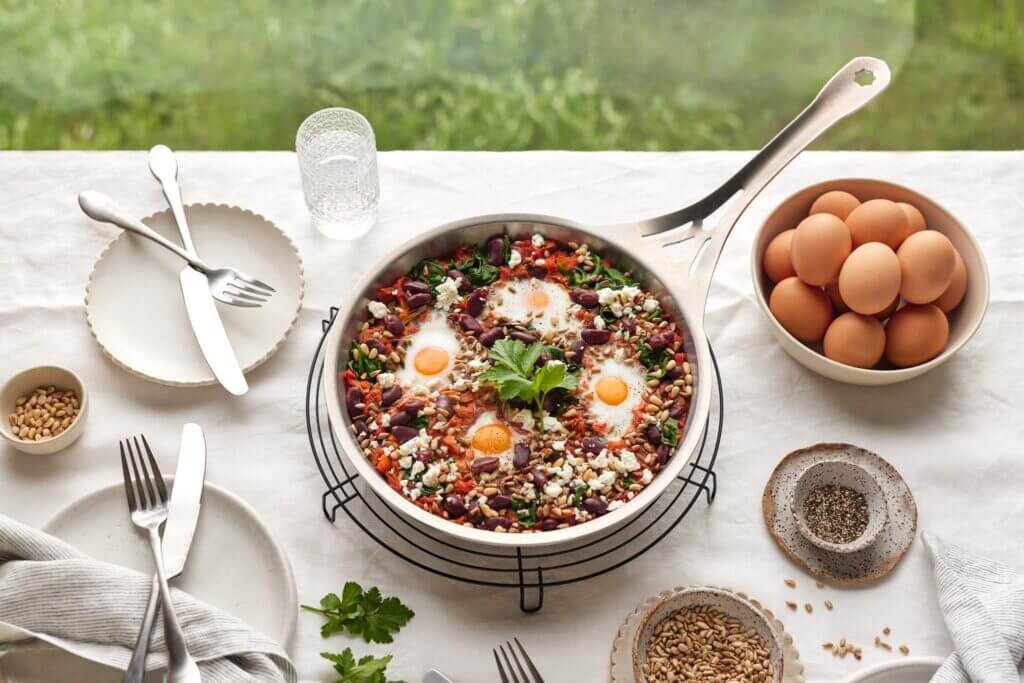
Remember those ads about how convenient is non-stick cookware? Finally, no eggs stuck onto your frying pan, and no more scratching them out while cleaning your stainless steel pan? Cooking made easy, right?
The “non-stick magic” was repeatedly announced for many cooking appliances including frying pans, woks, pots, casseroles etc. you name it.
We were all told that as long as you’re using a wooden spoon or spatula and you’re not scratching the surface coating of this cookware, you’d be fine. Well, that’s easier said than done. Haven’t you noticed how your nonstick cookware coating wears thin over time?
Is Non-stick Cookware Dangerous for Your Health?
Over time that surface is not as thick, shiny, and non-stick any longer, and sooner or later, you end up using your stainless steel fork, knife, spoon or any other metal tool and the results are scratches on the surface.
To help you figure out which non-toxic skillets, pots and pans are best for your kitchen, we use our product testing insights, as well extensive research and reviewed peer-reviewed studies to determine the safest cookware brands options. The list of all studies is cited at the bottom of this article.
A late 2022 study titled “Raman imaging for the identification of Teflon microplastics and nanoplastics released from non-stick cookware“¹ by the Australian Newcastle and Flinders University and published in the Science of The Total Environment Journal found that even one surface crack on a Teflon-coated pan could release approximately 9,100 microplastic particles. Furthermore, through their Raman imaging and algorithm models, they found that broken coating on your non stick cookware may lead to the release of 2,3 million microplastics and nanoplastics, that leach into your food and contaminate it in the form of PTFE (Polytetrafluoroethylene) / PFOA (Perfluorooctanoic acid) “forever chemicals”. These groups of chemicals also called PFCs (Perfluorochemicals) and are used to make fluoropolymer coatings and products that resist heat, oil, stains, grease, and water.
Because PFOA and PFTE have received such a bad reputation, companies have started replacing those chemicals with other forever chemicals of the same family like Gen X.² Overall, there are thousands and thousands of forever chemicals.
Don’t be fooled by PFOA – PFTE free label claims on products³ – the absence of one chemical doesn’t exclude the presence of another one, safe non stick cookware doesn’t exist, as demonstrated by a 2020 test by the US based not-for-profit organization Ecology Center 4
“PFOA-free doesn’t mean PFAS-free. In fact, most pans labeled PFOA-free were coated with PTFE without clearly indicating that.” Ecology Center
What are the Toxic Cookware Coatings to Avoid?
Let’s dive in the terminology of these synthetic chemicals to better understand what they are, and how to avoid them. Here are just a few of the many available on the market.
PFAS aka “Forever Chemicals”
PFAS (per- and polyfluoroalkyl substances) are also known as “forever chemicals”, because once they are in the environment and in our bodies, they don’t biodegrade, they don’t break down. These chemicals can be found in a huge amount of items we come into contact with everyday from household items to food packaging. Forever chemicals is the broad term for the whole family of Perfluorochemicals (PFCs).
Teflon™ (brand name) or PTFE
Teflon is the brand name behind the most famous PTFE (Polytetrafluoroethylene) non-stick coating and the petrochemical giant DuPont is the inventor of this synthetic chemical since the 1930s. It’s now owned by the Chemours company which was founded in 2015 as a spin-off of Dupont. Teflon is not just used in cookware but also on other products like fabric to make then waterproof. Over the years other chemical manufacturers have made similar coatings without using that branded name.
PFOA
PFOA (Perfluorooctanoic acid) is a chemical that was previously used to manufacture Teflon, and it’s also known as C8. It has been linked to health conditions such as kidney and liver disease5. If you haven’t done it yet, please watch the movie “Dark Waters” by Todd Haynes, as it tells the true story of how attorney Robert Bilot managed to bring to court chemical manufacturing corporation DuPont after they contaminated a town with this unregulated chemical.
PFOS
Perfluorooctane sulfonate (PFOS) is another man made fluorinated compounds that repels oil and water. This Technical Factsheet by the US EPA6 includes more details on PFOS/PFOA.
Gen X
Gen-X is a trademark for another chemical compound that has been developed to replace PFOA (C8) and other PFAS, mainly based on the ammonium salt of hexafluoropropylene oxide dimer acid (HFPO-DA). It is what environmental health scientists consider as a “regrettable substitution” as it has also been linked to neonatal mortality, low birthweight, and hepatomegaly in the Sprague-Dawley rats7.
“Ceramic” Coatings
Yes, contrary to all other blogs, we also list “ceramic” coating here. Why? Because, it’s not ceramic, it’s just marketing and a lot of BS. Yes, silica is used in the process but other various substances are also used to manufacture these coatings including: silane, aluminum oxide, tetraethoxysilane, methyltrimethoxysilane, potassium titanate, Zirconium(IV) Propoxide (ZTP), Colloidal Silica (CS), Polydimethoxysilane (PDMS), and Fluoralkylsilane (FAS). See the section below on ceramic non-stick cookware.
Based on this overview, and on the fact that many forever chemicals have been substituted by others over the years, why would you believe that safe non-stick pans exist?
Cooking is an essential part of our daily lives, but the type of cookware we use can significantly impact our health. When we discovered that many traditional pieces of cookware release harmful chemicals and even release toxic fumes when exposed to high temperatures, we had to act. To make informed choices for your kitchen, you need to know which cookware isn’t toxic and is safe, as this is the best for your health and for the environment. Opt for coating-free, and therefore plastic-free cookware.
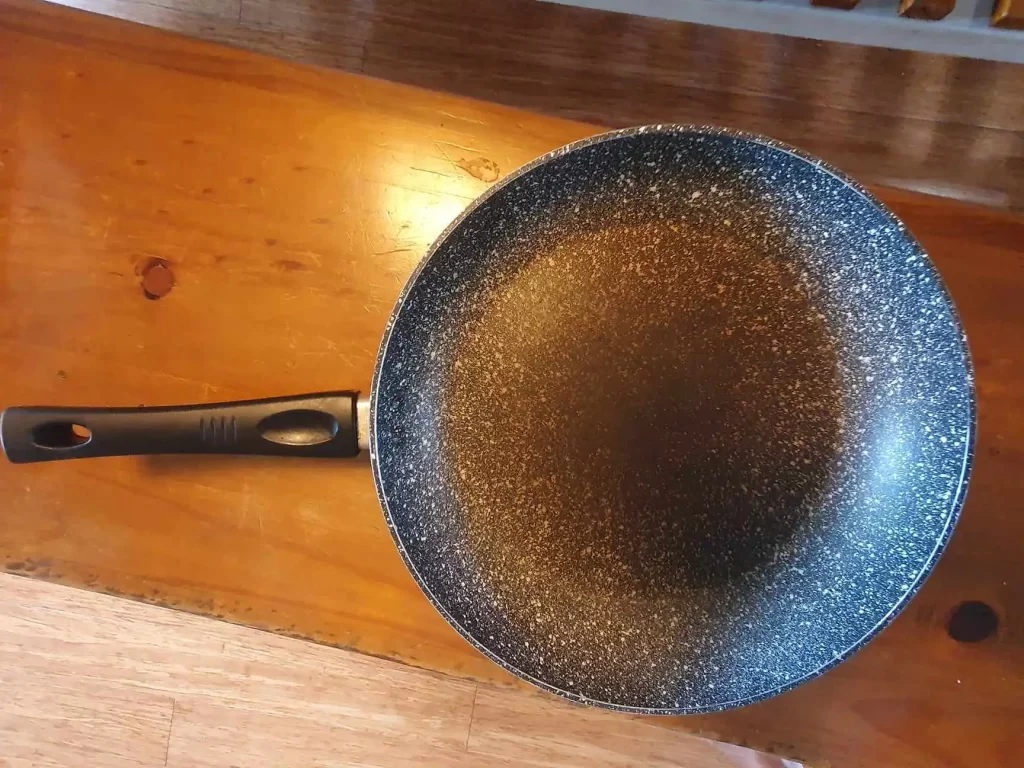 Credit: Image by I’m Plastic Free / Simona Paganetto – Testing stone ceramic coated cookware, result after one year of purchase.
Credit: Image by I’m Plastic Free / Simona Paganetto – Testing stone ceramic coated cookware, result after one year of purchase.
Related: Creating a Sustainable Kitchen: The Best Plastic-free, Non-Toxic Small Kitchen Appliances
What are the Safest, Non-Toxic Cookware Materials?
To identify non-toxic cookware, we’d like to point out the safest cookware materials on the market, the ones that have existed for centuries and despite not being the most convenient or budget, they are some of the safest and healthiest avalable on the market:
Cast Iron
- A material that has been used since ancient times and withstands the test of time. It heats very well and evenly throughout the product It offers a natural way to increase your body iron levels. One of the cons is that it is a material that is a bit heavy to handle.
Enameled Cast Iron
- A cast iron that has a vitreous enamel glaze (non-porous like glass) applied and fused to the surface to prevent rusting, eliminate the need to season the metal, and allow more thorough cleaning. Enameled cast iron is excellent for slow cooking and drawing flavor from foods.
Wrought Iron
- Wrought Iron is iron that has been heated and then worked to the preferred shape with tools. The main difference to cast iron is that cast iron is melted, poured into a mold, and then allowed to solidify.
Stainless Steel
- If you’re allergic to nickel, buy food-grade nickel-free stainless steel, usually stainless steel (21/0), which means 21% added chromium and no nickel. Stainless steel is not the best at conducting heat, which is extremely important when cooking. Therefore, full-clad cookware is to be preferred because it is more heat-responsive. Full-clad means that the entire body of the pan, and not just its cooking surface, is made of bonded layers of stainless steel with a core made of aluminum or copper, like a sandwich where the stainless steel is always on the outside.
Carbon Steel
- It is lighter than cast iron and more heat conductive and stick-resistant than stainless steel. The smooth cooking surface is great for cooking eggs, like a non-stick pan, but the seasoned vegetable oil coating tolerates far higher heat, and gets better with use and care.
Glass
- As a non-porous material, it is inert and doesn’t hold to any flavor or odor, it is durable. It’s not non-stick though and it requires some form of fat or grease when used at high temperatures. Make sure it is lead and cadmium-free.
Pure Ceramic (Not to be Confused with “Ceramic” Coating)
- Pure ceramic cookware doesn’t have to be confused with ceramic-coating. The first one is made of 100% ceramic, or better clay and has absolutely no metal content. It has a silica-based glaze that gives it a shiny, smooth surface after baking in a kiln. The latter is only a synthetic coating, please see our note below.
These materials are not advertised as non-stick and with reason! They require a bit more care in handling and use but at least they have no synthetic coating. Avoid also copper or aluminum cookware as these materials migrate into food, particularly acidic one.
Related: The Benefits of Switching to a Plastic-free Kettle. 13 Recommended Products to Consider
Is Non-Stick Ceramic Coated Cookware Safe?
We haven’t included non-stick ceramic-coated cookware like Caraway cookware, Bialetti, GreenLife, GreenPan etc. in our list because, in our opinion, every synthetic coating triggers some health concerns. Ceramic coating, like Teflon cookware coating, wears out over a short time (usually one year) and it can be damaged easily. This can expose heavy metals like lead, cadmium, neurotoxic aluminum (which is often used as a base) in direct contact with food and be potentially harmful. Have you asked yourself why?
Ceramic non-stick cookware is not made of ceramic! The apparently non-toxic ceramic coating is made from silicone dioxide which is a byproduct of sand. During manufacturing a process called sol-gel8 transforms the material and variuos chemicals like silane, aluminum oxide, tetraethoxysilane, methyltrimethoxysilane, potassium titanate, Zirconium(IV) Propoxide (ZTP), Colloidal Silica (CS), Polydimethoxysilane (PDMS), and Fluoralkylsilane (FAS)9 into a gel that gives its non-stick properties. Because of its smooth and glossy “look and feel” it’s labeled as ceramic as this word gives people a perception of an “artisanal product”, but in reality, it’s another synthetic-based polymer coating that is softer than metal, so the surface degrades with normal use. The coating releases some silicone oil that once heated prevents the food from sticking onto the pan, but once that’s finished your food will start sticking. This usually happens after only one year … and yet… another frying pan going to landfill adding to the millions already there, right? Not, that’s not what we mean with zero waste cooking.
In fact, we are not the only ones who are skeptical of the marketing techniques of such products, there is a class action10.ongoing in the USA.
Plus, scientists have reported on the possible release of titanium dioxide nanoparticles from non-stick coatings into food11. If the manufacturers are not transparent about the coating material they use, what else are they also not transparent about?
This video is a great explainer about the difference between ceramic cookware and ceramic coated cookware.
11 Truly Non-toxic Cookware Brands with No Synthetic Coatings
Finding the safest non-toxic cookware for your kitchen is more critical than ever. We all want to enjoy delicious meals prepared in the safest and healthiest way possible. That’s why in this article we have researched and scouted the best cookware without plastic coatings so that you can enjoy cooking without concerns for your health. This comprehensive guide will help you navigate the world of cookware sets and find the top-rated cookware brands that prioritize your health and well-being.
We’ll share the best non-toxic cookware, exploring the best materials available as non-toxic alternatives to disposable non-stick pans. We’ll answer important questions about cookware safety and provide detailed insights into the top options on the market. By the end of this article, you’ll be equipped with the knowledge you need to make your kitchen a healthier place.
This post contains affiliate links, which means we may receive a small commission, at no cost to you, if you make a purchase through a link. This helps us continue the hard work we put into researching products and solutions.
Please Note: Our health content is for informational purposes only and is not intended as professional medical advice. Consult a medical professional on questions about your health. Please read our disclaimer.
Best Cast Iron Cookware
1) Lodge Cast Iron Cookware Made in the USA
Lodge has been making some of the best cast iron cookware since 1896 in the USA with non-toxic, PFOA & PTFE free materials. They operate two foundries in South Pittsburg, Tennessee. They have been manufacturing cookware for over 125 years, creating solid, durable pieces that will last for generations. Lodge’s pots and pans are pre-seasoned at the foundry by using 100% only vegetable oil, no synthetic coatings or chemicals for a natural, easy-release finish that improves with use. The more you use the cast iron pots the better the seasoning will get. The unparalleled distribution and retention of heat ensures rapid and efficient cooking.
Suggested products:
- Lodge 10.25 Inch Cast Iron Pre-Seasoned Skillet
- Lodge 10.5 Inch Cast Iron Square Pre-Seasoned Grill Pan
- Lodge 5 Quart Covered Deep Skillet
- Lodge Cast Iron Rectangular Reservible Grill / Griddle
View the Lodge Store on Amazon USA – Canada – UK – Australia
2) Le Creuset Enameled Cast Iron Cookware Made in France
Le Creuset is a French-Belgian maker of one of the best non toxic cookware companies. They are best known for producing enameled cast-iron cookware and they have been manufacturing their products in the town of Fresnoy-le-Grand in France since 1925 and offer a lifetime warranty on them. One of their most famous pot designs is the iconic Le Creuset Dutch Oven which is an indispensable tool in the kitchen of master chefs as well as home cooks. Nowadays, the company makes many other types of healthiest cookware options like bakeware, fondue sets, tagines etc. also made of different materials.
The benefits of their enameled cast iron product range are that they deliver superior heat distribution and retention, they are ready to use, they require no seasoning, they are easy to clean and that durable enamel resists dulling, staining, chipping and cracking. One of the disadvantages is that since they require no seasoning, a decent amount of fat is needed each time you cook.
Suggested products:
- Le Creuset Enameled Cast Iron Round Dutch Oven
- Le Creuset Enameled Cast Iron Oval Dutch Oven
- Le Creuset Enameled Cast Iron Alpine Wood Handle Fry Pan
- Le Creuset Enameled Cast Iron Signature Saucepan, 2.25 qt
Visit Le Creuset Store on Amazon USA – Canada – UK – Australia
Related: Why You Should Switch to Plastic-free Microwave Food Covers?
3) Solidteknics Wrought Iron and Ferritic Stainless Steel Cookware Made in Australia and in the USA
Credit: Image by I’m Plastic Free / Simona Paganetto – Testing Solidteknics AUS-ION™ Frypan
Solidteknics was founded in 2014 by a mechanical engineer and keen cook who was tired of the disposable, synthetic-coated pans piling up in our landfills. Over two decades of R&D he was able to invent a world-first seamless one-piece pan, wrought from a single sheet of iron.
This sustainable cookware is made of a single sheet of thick material in either stainless steel or wrought iron, and it is free from toxins, heavy metals, synthetic coatings, and durable enough to last for centuries so it can be passed from generation to generation. Their range of non-toxic pans are now used in thousands of professional kitchens and happy homes, all over the world.
The AUS-ION™ product range is wrought from clean Australian iron, it’s perfect for all of your everyday oil/fat-based frying, grilling, searing and baking needs. It can be seasoned to build and maintain a healthy natural non-stick surface.
nöni™ is their ferritic, non-nickel stainless steel range, it’s best for slow cooking and cooking wet and acidic foods, though it’s conductive enough to sear a steak. They use ferritic stainless steel because it is non-nickel and nearly twice as conductive as commonly used 18-10 Austenitic stainless steels (18-10 stainless steel means 18% Chromium and 10% Nickel). It is magnetic and therefore compatible with induction cooktops, it requires very low maintenance, it’s easy to clean and it’s even dishwasher safe. Below is an image of our own non toxic skillet from this manufacturer.
Visit the Solidteknics online store
 Credit: Image by I’m Plastic Free / Simona Paganetto – Testing Solidteknics 31cm Noni™ Sauteuse Pan
Credit: Image by I’m Plastic Free / Simona Paganetto – Testing Solidteknics 31cm Noni™ Sauteuse Pan
Best Stainless Steel Cookware
4) All-Clad Stainless Steel Pots and Pans Made in the USA
All-Clad is an American cookware company that has been around since 1971 and is best known for its fully clad cookware. The founder is a metallurgist who discovered this technique by accident, as he was trying to build a better pan, a pan built with several bonded layers, also called “plys”. If you are looking for all-cladded stainless steel pots and pans, All-Clad will satisfy your needs. They have a 3-ply, a 5-ply range with aluminum as a core, and another range with copper as a core, plus a small cast-iron product range All products are bonded, engineered, and assembled in Canonsburg, PA.
Their products are compatible with any stovetop including induction. To keep your All-Clad looking brand new, wash your cookware with soap and sponge, using non scratching utensils.
Suggested products:
- All-Clad D5 5-Ply Brushed Stainless Steel Set 10 piece (Currently 44% off)
- All-Clad D3 3-Ply Stainless Steel Cookware Set 7 Piece
- All-Clad D3 Stainless Steel Frying Pan Cookware Set
Visit All-Clad Store on Amazon USA – Canada – UK – Australia
5) 360° Cookware Handcrafted in the USA
360° cookware is manufactured in West Bend, Wisconsin, United States and it is made of three primary metals and is thicker than most cookware on the market. The inside layer of these plastic free pots and pans (what primarily touches your food) is T-304 Surgical Grade Stainless Steel and the range is 18/8 to 18/10. 18/8 and 18/10 refers to the percentage amount of chromium and nickel in the metal. In the case of 360, it’s 18% chromium and 8% to 10% nickel. The outside layer (what touches the heat) is T-400 Series Stainless Steel which has a lower nickel content and high carbon steel content to better interact on induction cooktops. These two layers of stainless steel surround a core layer of aluminum, which ensures superior heat conduction and heat distribution. It is oven safe up to 500 degrees F. and works on every type of stove.
They are so sure about their quality that they offer a lifetime warranty. They have been recognized by the EPA as their manufacturing process includes no harsh chemicals, but instead uses a dry sanding process to produce a smoother finish and a nicer final product.
Suggested products:
- 360° Stainless Steel Wok with Lid, 5 Quart, Oven Safe
- 360° Stainless Steel Cake Pan (9″ Round), 5 Ply, Stainless Steel Bakeware
Visit the 360° Store on Amazon USA – Canada – UK
6) HOMICHEF Nickel-free Stainless Steel Cookware Sets Made in South Korea and China
HOMICHEF has been in business since 1998 and make its products in South Korea and China. They offer stainless steel cookware sets that are nickel-free, non-allergic and are great non-toxic cookware options. Stainless steel cookware generally includes nickel because it’s more corrosion-resistant, however nickel leaches under cooking conditions and it is high up on the ATSDR list of priority toxins12. Nickel is a known reproductive toxin and is a carcinogen in higher amounts. One of the best stainless steel for pans and pots is stainless steel (21/0), which means 21% added chromium and no nickel. This has extremely good corrosion resistance, but is characterized by high thermal conductivity and magnetism. According to the manufaturer tests show a noticeable degree (12-15%) of energy savings.
Suggested products:
- HOMICHEF 3 PCS Whole Food Steamer Set – Nickel Free Stainless Steel Veggie Steamer Pot
- HOMICHEF 14 Piece Nickel-free Stainless Steel Cookware Set
- HOMICHEF 16 Quart LARGE Stock Pot with Glass Lid
Visit the HOMICHEF Store on Amazon USA – Canada – UK – Australia
Related: Is it Harmful to Store Food in Plastic Containers?
Best Carbon Steel Cookware Sets
7) De Buyer Carbon Steel Cookware Made in France
De Buyer has been making steel frying pans since 1830 in a small French village in Val d’Ajol from metals mined locally. Now they work with culinary professionals around the world to develop and produce innovative kitchen utensils. One of their iconic products is the MINERAL B steel frying pan, the essential utensil for searing, grilling, browning for healthy and tasty cooking. It is lighter than cast iron & more heat-conductive than stainless steel. It is finished with French beeswax for an all-natural protection against oxidation and to facilitate the seasoning and therefore the non-stick properties of the pan.
A part from the carbon steel line of cookware, they offer also a range of plastic free cooking utensils in stainless steel, iron, and copper.
Suggested products:
Visit the DeBuyer Store on Amazon USA – Canada – UK – Australia
8) Made In Carbon Steel Pans Made in Europe & the USA
Made In is a professional grade cookware brand loved by Chefs worldwide. Their carbon steel range combines the best of cast Iron and stainless clad, creating a naturally non stick alternative. It seasons faster, responds quicker, and is rugged enough for your grill or an open flame.
The products are crafted from premium metals by artisans in different countries, mostly in Europe (Sweden, France, Italy, England etc.) and the USA. As they offer a lifetime warranty they must be sure, that the products are great and we can comfirm this!
However, the only thing we don’t like, is the fact that they also offer nonstick options.
Suggested products:
Visit the Made In Store on Amazon USA – Canada – UK
Related: The 17 Best Plastic Free Coffee Makers: Enjoy Deliciously, Guilt-Free Coffee Every Morning
Best 100% Ceramic Cookware
9) Xtrema Pure Ceramic Cookware Made in China
Xtrema is another brand of 100% non-toxic pure ceramic pots and pans. The products are made in China, where over seventy percent of the world’s ceramic products are cultivated and where this material has been invented first. They produce skillets, frying pans, woks, bakeware and even teaware of safe ceramic. Xtrema cookware is perfect when you’re looking for the best cooking tools that provide even heating and excellent thermal retention.
Visit the Xtrema store
Current promo: 25% off site-wide.
10) Silit Functional Ceramic Cookware Made in Germany
Since 1955, Silit has been manufacturing some of the best ceramic cookware sets exclusively in Riedlingen in Baden-Württemberg, Germany, and now belongs to the WFM group. The label “Made in Germany” is a promise of quality. They are the inventor of Silargan® – an innovative functional, safe ceramic cookware material that has a non-porous, tasteless surface, it’s easy to clean with your plastic-free dish soap or in the dishwasher, and it’s nickel-free.
Silargan has been produced since 1989 and has been continuously improved over the years. It is inseparably fused to the steel body of the cookware at very high temperatures, making it shock and scratch-resistant. Silit Silargan is therefore considerably more stable than most enamel cookware.
Find SILIT products on Amazon USA – Canada – UK – Australia
Related: Why is a Plastic Free Blender Better for your Health?
Best Glass Cookware
11) Visions Glass Cookware Made in France
Image: Vintage Visions Cookware by I’m Plastic Free found at an opp shop.
Visions is a brand of innovative glass-ceramic cookware which was originally created by French multinational Corning in the late 1970s, and later became popular also in the USA and sold worldwide by Instant Brands. Their products are made of a material that belongs to the Pyroceram family of vitroceramics (glass-ceramics). This material is transparent like glass (mostly available in an amber or cranberry tint), non-porous, and features thermal characteristics similar to Corningware, but has improved resistance to staining and the detrimental effects of acids and detergents. It is tested for heavy metals (cadmium, mercury, arsenic, etc.) and does not contain lead.
It is not to be confused with borosilicate glass, it is more resistant than that and capable of withstanding extreme thermal changes and heat of up to 1,560+ °F / 850°C, meaning that it could go from the freezer to the oven without risk of shattering. Therefore, it is dishwasher, freezer, microwave, preheated-oven, broiler and stove-top safe (gas & electric). For safer non-toxic cooking though, you should never use pieces that are scratched or split as these may shutter, particularly as vintage Visions products are becoming more popular. Finally, it is a very healthy choice due to its non-porous nature, Visions will never stain, harbor odors, or leach anything into your meals. We were lucky to find one at an opp shop and we are happily using it for stews and soups.
Find Visions products on Amazon USA – Canada – UK – Australia
Find Vintage Visions products on Etsy
Related: Plastic-Free Tea Bags: Which Brands are Really Plastic-Free?
FAQs & Tips about Non-coated Cookware
1. How to Achieve a Nonstick Surface with a Stainless Steel Pan?
This video shows a trick on how to achieve a non-stick surface with a conductive non nickel stainless steel Solidteknics pan.
2. How to Make Scrambled Eggs Non Stick in a Seasoned Cast Iron Pan?
Similarly, we received many questions on how to make scrambled eggs without them sticking to to a iron pan, so we are trying to help with a trick. The key is to keep gently scraping the cooked eggs from the outer circle of the pan to the middle at low heat, before they have a chance to dry and burn, and stick to the seasoning. The common mistake is to leave them too long at too high temperature.
3. What are the Environmental Issues with Cheap Non-stick Cookware?
Cheap syntethic-coated non-stick cookware brands offer the best budget option but that’s only a short-term view as they want you to buy a new pan every year or two, right? Once scratched you have a toxic cocktail of chemicals leaching into your food and one of the safest things to do is to dispose of these.
However, one of the many problems with these non-stick pans is that they are extremely difficult to recycle as they are often made of multiple materials (steel, Teflon coating, plastic handles etc.) These products aren’t designed for disassembly and repair, so they are just piling up in landfills by the millions every year according to the principles of a linear economy (take – make – waste). Most recycling companies won’t accept them, so they simply get thrown out with the household waste destined for landfills by the millions every year. That is an environmental disaster as the PFAS coating remains in the soil for centuries.
For example, according to Kitchen Warehouse a staggering 72% of Australians toss their old cookware in general waste bins, which equates to a massive 2.7 million pieces of cookware ending up in landfill each year. That’s 7,000 pieces per day. To counteract this Kitchen Warehouse has launched The Great Exchange Pan a cookware recycling initiative.
We hope that this article has helped you find the best eco-friendly cookware picks, as most of them can be recycled at the end of their life.
Conclusion: Building a Healthier Kitchen with the Safest, Non-Toxic Cookware Brands is Possible
The ultimate reality is that we pay a price for the “convenience” and that price is our health in the long run. As we wrap up our exploration of the best non-toxic pans and pots and materials, it’s essential to recap the key takeaways:
- Choosing non-toxic cookware brands is crucial for maintaining a healthy kitchen environment.
- Stainless steel, pure ceramic, cast iron, carbon steel, and glass are excellent options for non-toxic cookware. They may be a bit heavier to handle, and yes they may require some more maintenance for washing and greasing the surfaces to avoid rust stains but ultimately they won’t release toxic chemicals every time you cook.
- Choosing the right cookware set can make your cooking experience more enjoyable and efficient. Take time to do your research!
- Always prioritize safety and health when selecting cookware for your kitchen.
- Don’t buy budget cookware, there is a reason why it is cheap, buy either second-hand or just be ready for an investment that will last for generations.
By following the guidance in this article, you can make informed choices and create a kitchen that promotes the well-being of you and your loved ones. Remember, investing in the safest non-toxic cookware brands is an investment in your health and the delicious meals you’ll prepare in the years to come. We hope that this top non-toxic cookware guide was helpful for you to build a safe and healthy kitchen!
Our Expertise:
This piece was written and updated by Simona Paganetto, I’m Plastic Free editor and managing director. Simona spent a decade in product management in the healthcare industry, and is, therefore, very familiar with reading scientific studies published in peer-reviewed journals. Simona is certified as a Circular Economy Specialist by the Circular Economy Alliance in conjunction with the École des Ponts Business School in Paris, France. In 2023 she was a joint winner of the Chief Executive Women (CEW)/ANZ Sustainability Scholarship and has been accepted into the Executive Education for Sustainability Leadership course, Department of Environmental Health, Harvard T.h. Chan School of Public Health, Harvard University in their Q4 2024 cohort. This page clarifies her work and experience.
References and Scientific Research Sources:
- https://www.sciencedirect.com/science/article/abs/pii/S004896972205392X?via%3Dihub
- https://pubmed.ncbi.nlm.nih.gov/28913736/
- https://www.consumerreports.org/toxic-chemicals-substances/you-cant-always-trust-claims-on-non-toxic-cookware-a4849321487/
- https://www.ecocenter.org/our-work/healthy-stuff-lab/reports/whats-cooking
- https://www.ncbi.nlm.nih.gov/pmc/articles/PMC4977053/
- https://19january2021snapshot.epa.gov/sites/static/files/2017-12/documents/ffrrofactsheet_contaminants_pfos_pfoa_11-20-17_508_0.pdf
- https://www.ncbi.nlm.nih.gov/pmc/articles/PMC7775906/
- https://orioncoat.com/blog/sol-gel-coatings/
- https://link.springer.com/article/10.1007/s10971-021-05482-5
- https://topclassactions.com/lawsuit-settlements/consumer-products/household/greenpan-class-action-says-non-stick-pans-contain-toxins/
- https://www.foodpackagingforum.org/news/nanoparticles-released-by-quasi-ceramic-pans
- https://www.atsdr.cdc.gov/spl/index.html
Comments
Mikael
March 12, 2024 at 10:58 pmHi
There is a Swedish comapny named OnePan(.se) that sells a Ceramic/SolGel coated pan that goes in a cicular system. You can order a recoat when its worn out. No pans in landfill and you can enjoy non-stick without buying new pans.
Babu
May 22, 2024 at 3:26 pmYou might want to remove Xtrema from your list. By now its clear that they have been blatently lying about their products, actually containing lead and other metals. Read about it on the Tamara Rubin blog.
irene
May 24, 2024 at 8:57 amhi, is there any safe wok brand options? something big enough for a family of 4? i can’t seem to find any safe alternatives.
Aubrey
May 27, 2024 at 4:17 amWhat about stoneware? Would it be considered non-toxic?
Rachelle
November 13, 2024 at 12:06 pmAll Clad is out of my budget – is Essteele Stainless Steel, cooper inside pots and pans and equally safe alternative in your opinion? Thank you!
Anyone know about a 100% stainless steel toaster over that has stainless Steel on the inside components
November 24, 2024 at 12:14 amWould love to find a stainless steel toaster over on the inside and on the inside components
Adriana
November 27, 2024 at 12:42 pmHi
Do you have thoughts on the “Cooks Collective Brand” in Australia
Thank you
Fatima
December 23, 2024 at 5:42 amThank you so much for your article. However, I’m still unsure which cookware would meet all my expectations. I’m looking for healthy, affordable cookware that can be used on induction cooktops, requires less oil, and can withstand high heat when cooking meals or acidic foods like tomato sauce. Do you have any suggestions?
D
December 30, 2024 at 3:34 amWhat about Cuisinart Multiclad? I just purchased the 12 pc set and their onyx black and rose gold skillet set. Should I purchase Homichef instead? I see that Homichef does not include nickel, what about any other dangerous materials?
D Knight
December 30, 2024 at 3:35 amWhat about Cuisinart Multiclad? I just purchased the 12 pc set and their onyx black and rose gold skillet set. Should I purchase Homichef instead? I see that Homichef does not include nickel, what about any other dangerous materials?
Anita Vass
February 13, 2025 at 6:59 amDear Simona,
thank you for the informative article, it is super useful and educative as well! 🙂
May I ask about the Silargan cookware? I read that these pans are not 100% ceramic but the Silargan is fused to a steel body.
I was wondering if they use any nano-metals or other chemical substances while they apply the coating? I red that not just the coating, but how they apply the coating also matters, because sometimes during this process the coating becomes toxic..
I would love to try 100% ceramic cookware, but unfortunetly ordering Xtrema to Europe is very expensive. 🙁 Therefore I decided to go for Silit Siligran from your list, I was just wondering if it is as safe as a 100% ceramic cookware?
thank you ahead for your kind answer! 🙂
Naomi
March 18, 2025 at 3:13 amHi there
I have just discovered you. I am so happy! Thank you for putting in all this hard work.
I see your comment on stoneware above. When you say they usually have some glazing on top, is this usually glass and is it acceptable? I am thinking about the Le Creuset stoneware. Do you think they are okay?
Many thanks,
Naomi



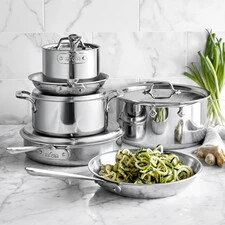


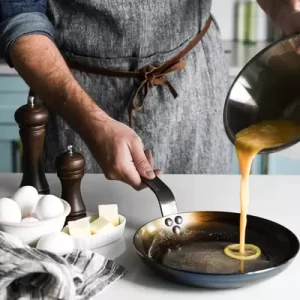
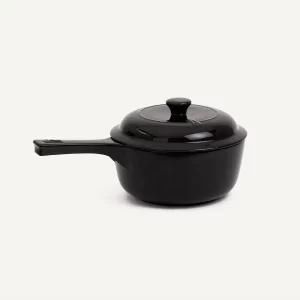


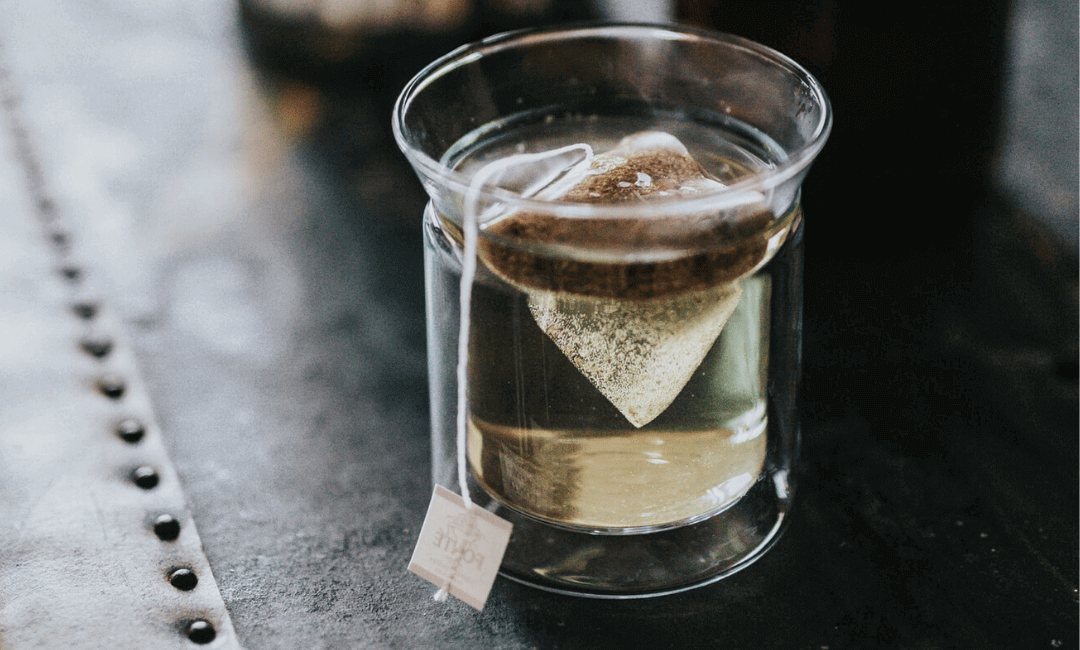
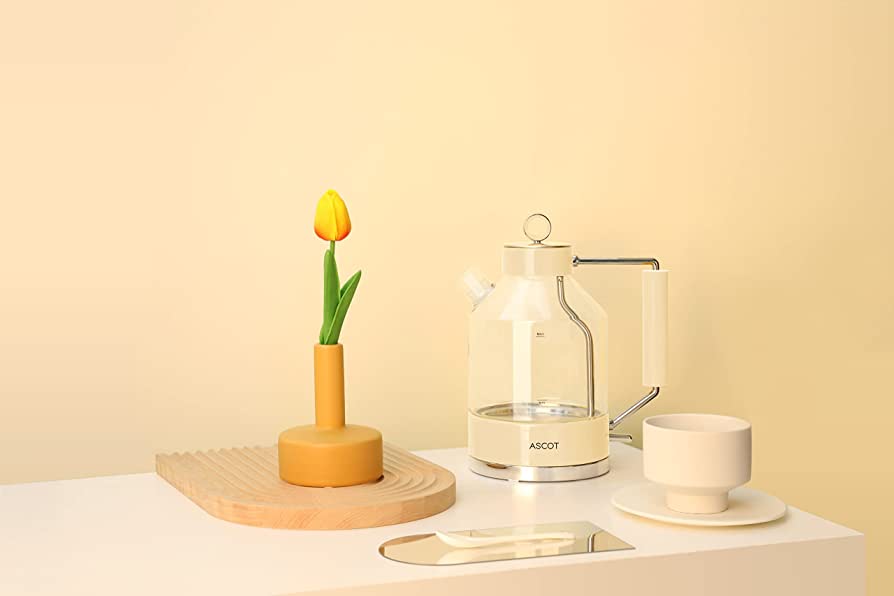

Dee Wood
January 5, 2024 at 3:44 amHi, Great article and info. I mostly use Le Crueset cast iron, or their enameled cast iron. But, what do you do when you want to fry/scramble an egg? Do you have any recommendations for a “non-stick” pan that would not be toxic? Guessing from your article there is no such thing, but asking in case you can suggest…thanks.
I'm Plastic Free
January 5, 2024 at 3:56 pmHi Dee,
Thank you for your message and happy to hear you enjoy the content of my site!
It is a great question regarding the scrambled eggs. To be honest with you, I haven’t come across a 100% safe non-stick surface until now… so I do not own any non-stick pans any longer so the temptation to use them is gone! (Best way not to continue to use them!)
I use a stainless steel pan with a wooden spatula, the eggs do stick a bit but I put a bit of milk towards the end and that makes it easier….
Then I wait for the pan to cool off, put water and a bit of detergent, and let it soak for a few hours. When I clean it, it’s super easy then!
However, I want to buy next a cast iron skillet like this one next https://amzn.to/3vsHhpq as I read and heard from friends that it’s even easier to fry eggs than stainless steel!
I hope this helps!
Kind regards,
Simona
Cristian
February 15, 2024 at 2:36 amHi, ultimately you can learn how to season properly a carbon steel fry pan, many videos of how to do it on YouTube, it’s true its no easy task but once done you get a non stick surface that’s gonna last a life time, only thing is that you can’t cook acidic foods on it like tomatoes, lemon or wine. I bought a merten and storck 20cm fry pan to experiment with it and once seasoned properly fried eggs slide like a hockey puck around it. Cheers
I'm Plastic Free
February 22, 2024 at 4:27 pmHi Cristian,
Yes, you’re right, it’s the matter of developing the habit to season properly your pan. Thank you so much for sharing your experience.
Kind regards,
Simona